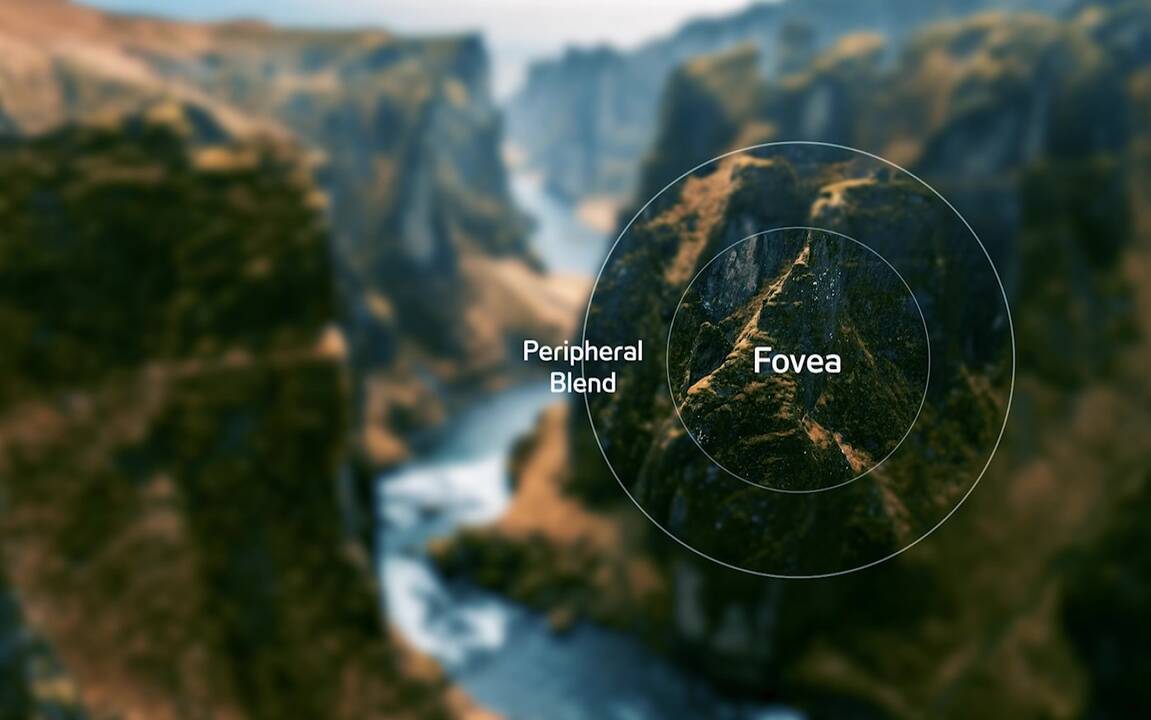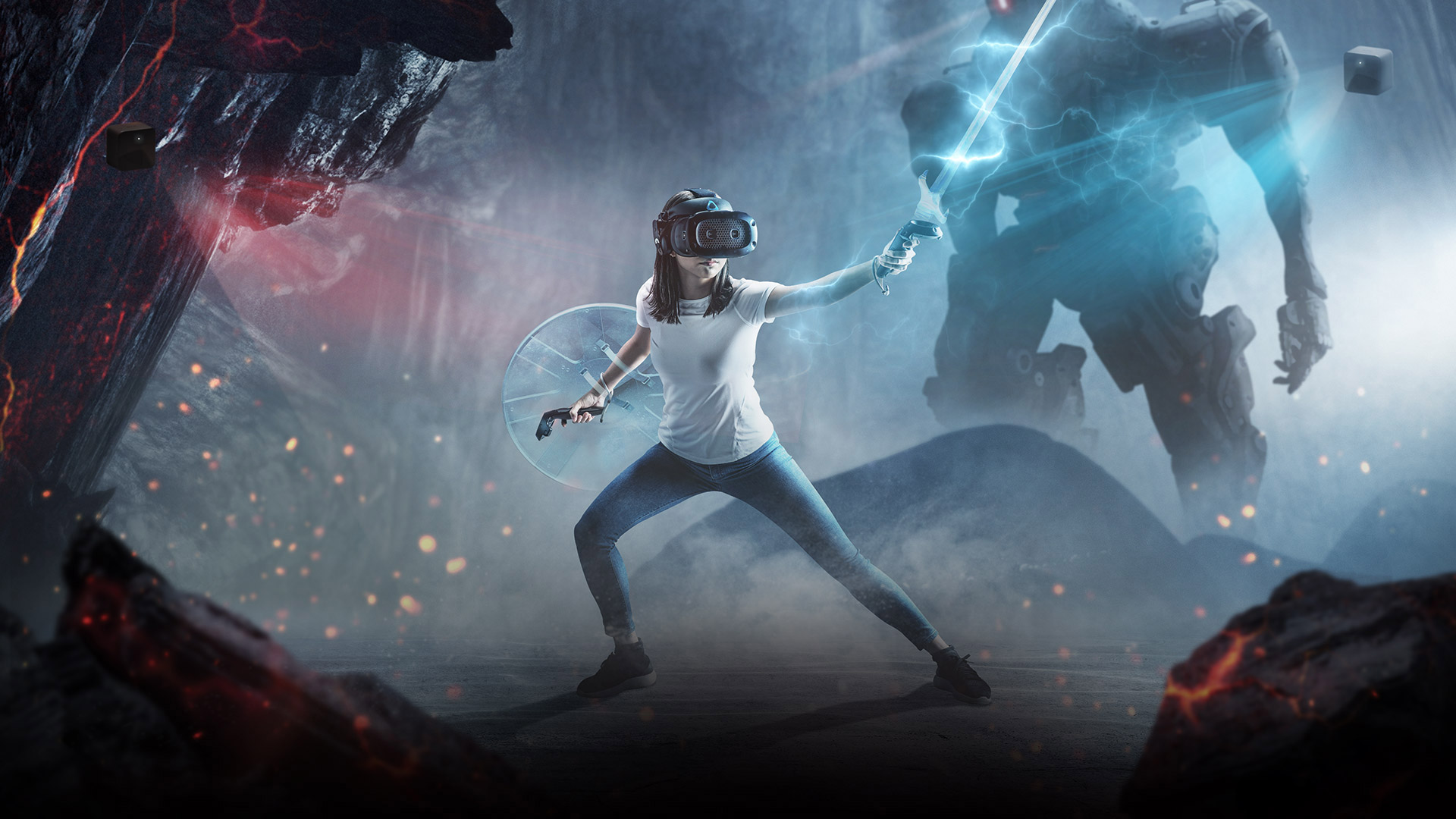- EyeNexus streams only the area you are looking at in full HD to reduce lag and save data.
- It could help make VR more accessible and significantly cheaper.
- Making use of accurate eye tracking and better prediction, EyeNexus can become successful.
- The technology can be applied beyond gaming in VR meetings and AR workspaces.
The promise of VR has always been delivering fully immersive worlds to us but delivering it has always been an issue due to high costs and access. To solve these issues, Cloud VR is used to send high-quality visuals from remote servers to VR headsets. But this process demands a lot of processing power and high bandwidths.
Without powerful connections, users often face lag, blurry visuals, or stuttering. Here is where foveated streaming comes in, which is a process that uses human vision itself to make VR streaming more efficient and less costly.
What is Foveated Streaming?
Our vision is not all 100% HD. The eyes only tend to see sharp detail in a small central region called the fovea, while everything else around it seems blurrier, which we call peripheral vision. Foveated streaming uses this to its advantage to help reduce workload on servers and devices.

How EyeNexus Works
EyeNexus is a system introduced to help make VR less costly and accessible. The technology combines real-time eye tracking with adaptive video streaming. The system constantly monitors the user’s gaze to determine where they are looking and only delivers that area in full definition.
The rest of the image, which is outside the fovea, is rendered in low quality, helping save processing power and data. What we get from this is a better, smoother, cheaper, and more efficient system that delivers the same quality, utilising much less bandwidth.

EyeNexus can also adapt to changing network conditions, for example, if your signals drop, it will reduce the size of the high-quality zone and restore it when the network gets better. This helps ensure that users get a stable and consistent experience without any lag or resolution drops while cloud gaming, even with average network speed.
A Big Deal For Cloud VR
Cloud VR has always struggled to balance real-time performance with visual quality. It used to send two high-resolution images of 90 frames per second for each eye, which demanded too much processing power. But now the technology limits the usage of this data.
Gamers can experience console-quality VR titles such as Batman: Arkham VR without having to deal with heavy costs. Additionally, by using EyeNexus, Cloud VR can provide services to more users with much less network load.
Challenges and Limitations
Despite its promise, EyeNexus still has many problems. The biggest problem with the technology is efficient eye tracking. The system depends on knowing exactly where the user’s gaze is. If the monitoring lags behind even a millisecond, the user can see a blur or flicker when their gaze moves.

Another significant issue is gaze tracking. The human eye shifts focus many times per second, and trying to predict these movements can be challenging. Network stability also plays a vital role; if the network speed fluctuates too often, the foveated image must constantly update itself to avoid any issues.
Also, not all VR headsets come with an eye-tracking feature, which limits their compatibility. However, as more hardware makers implement eye tracking in their devices and as gaze prediction models improve, these issues will inevitably fade.
Broader Impact
Foveated rendering has much broader potential than just gaming. Making use of the technology, professional workers could work together in virtual workspaces without having a need for high-end computers. Similarly, students can also benefit from the tech as it will allow them to attend online classes, unlike ever before, more immersive and interactive than ever.

In Augmented Reality (AR), foveated streaming could allow lightweight glasses such as the Virtue Pro to display realistic 3D overlays without any need for heavy local processing. Imagine attending virtual concerts such as the Travis Scott Fortnite concert in real-time and in full resolution without any lag, as if you were really there. The point being that this technology could have limitless implications in the real world.
Final Thoughts
EyeNexus showcases how intelligent foveated streaming can drastically help improve Cloud VR. Instead of making GPUs or networks render visual details in high quality, the technology focuses resources on where they are actually needed. If the technology becomes a standard in the industry, it could help make VR accessible to more individuals.
Thank you! Please share your positive feedback. 🔋
How could we improve this post? Please Help us. 😔
[Comparisons Expert]
Shehryar Khan, a seasoned PC hardware expert, brings over three years of extensive experience and a deep passion for the world of technology. With a love for building PCs and a genuine enthusiasm for exploring the latest advancements in components, his expertise shines through his work and dedication towards this field. Currently, Shehryar is rocking a custom loop setup for his built.
Get In Touch: shehryar@tech4gamers.com


 Threads
Threads

